Does a wasp leave a sting after a bite: where and how many times it can sting
Winged ants have different colors (yellow-black, rainbow). They are classified into solitary, family, parasitic species. Females, in addition to representatives of a social group, use the ovipositor to bite. Single and parasitic wasps leave a sting after a bite, which is not present in males. The latter are found in late summer or early fall.
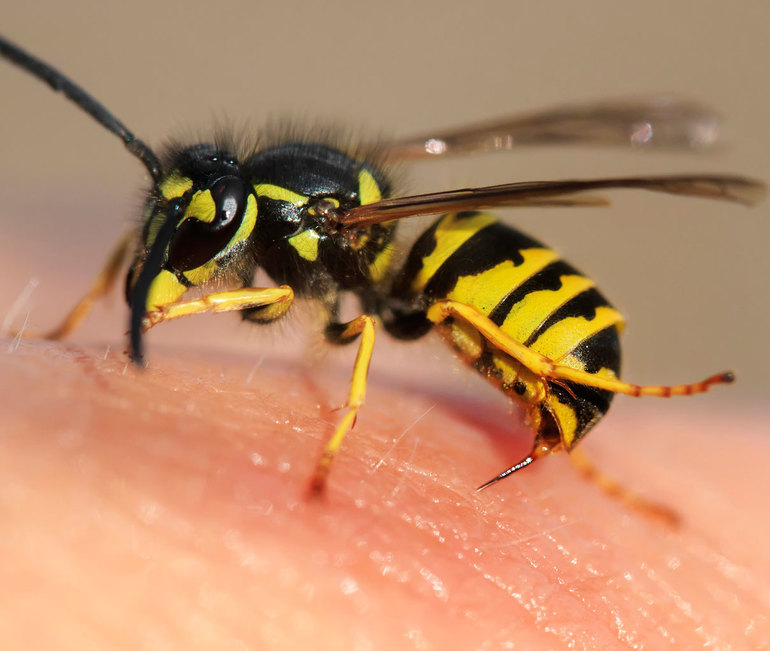
Anatomical features
The amount of wasp venom in insects does not exceed 1.5 mg. After the attack, it is replenished. Since the ovipositor is fragile, they can bite areas where soft integuments are located, and hard ones bite through toothless jaws. They are also used by insects to feed the larvae.
Food for adults:
- nectar;
- fall;
- honey;
- sweet droplets of resin or juice.
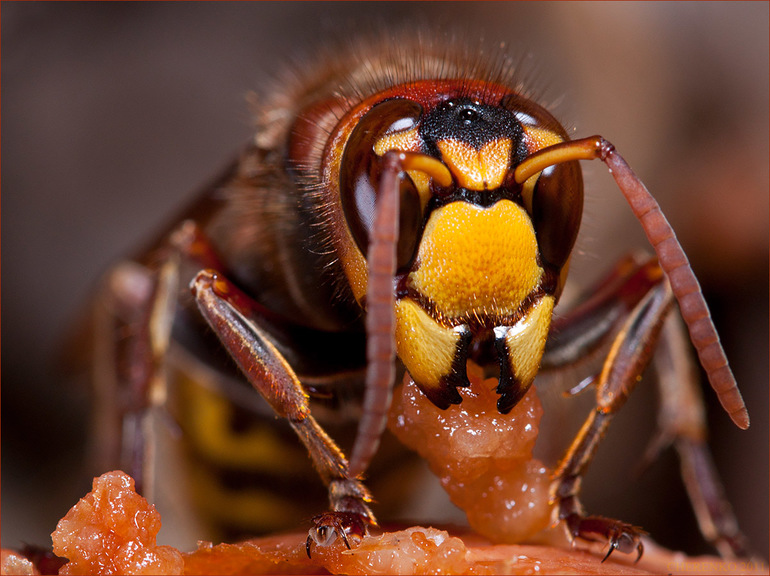
Human blood does not interest them. Larvae feed on small bugs, flies, spiders. Adults poison the victim by chewing it. The insect parents feed the gruel on the larvae. The main reason why a wasp or a bee can sting a person is the protection of their interests.
The smooth ovipositor is easy to pull out, so the insect can bite several times in a row.
The degree of damage to human skin depends on the following factors:
- current state of the dermis;
- amount of poison;
- the number of grooves in the stylet.
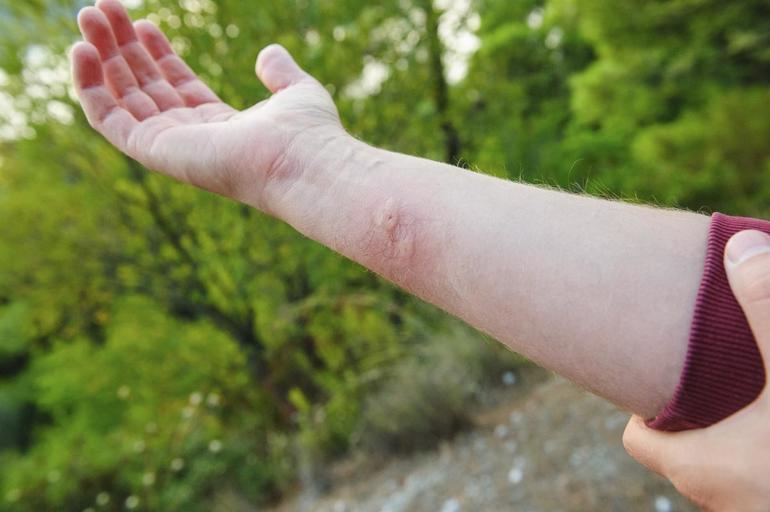
The last parts of the body of individuals are located in the peritoneum, under special plates. If necessary, they move out. Before a wasp stings, the ovipositor evolves, hardening and connecting with a poisonous gland. Muscles contract, squeezing about ¼ of the stock of poison. It flows down the inner gutters. Wasp does not leave a sting when bitten, if it is quickly thrown off.
The difference between her ovipositor and the bee is that the last sting has notches along the length of the sting. When attacked, the ovipositor penetrates deep into the skin, remaining inside the body along with a bag of poison. The last element is part of the insect itself, which has its own muscles. They contract for another 20 minutes after driving the wasp. During this period, the remnants of the poison pour under the skin.
Therefore, if the insect is crushed or brushed away after a bite, the sting will remain in the wound, and the poison will enter the victim’s body.
To find out if an insect has an ovipositor, the following steps are recommended:
- wear gloves;
- catch the attacking insect by the wings;
- press on the abdomen (when pressed, the sting extends, and then hides back).
Distinctive features
The bee’s ovipositor differs from the wasp in color: in the first insects it has a black, brown or gray hue, and in the second there are bright yellow stripes. The wasp sting is smooth and quickly comes out when pressed, and the bee has notches, which makes it difficult to move. Insects can sting in different ways, causing serious consequences: edema, rash.
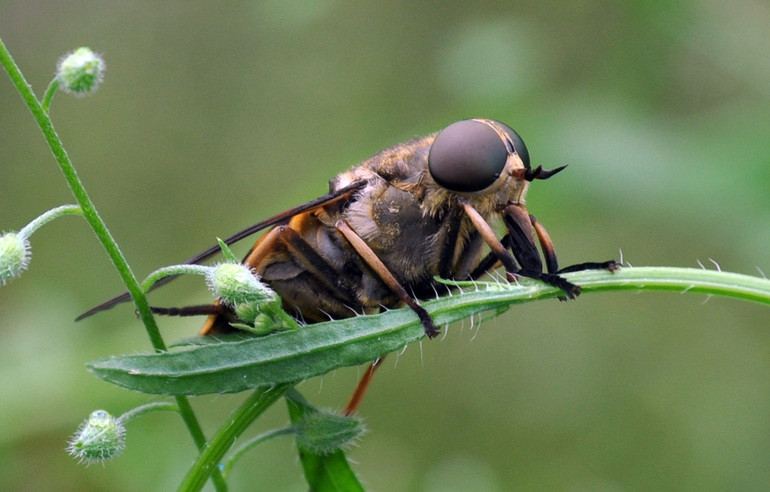
Gadflies are considered the most dangerous, since they bite off the victim’s skin, leaving the eggs inside. Allergy sufferers need protection from hornets and bees. Doctors have proven that bee venom for a healthy person is useful. It not only normalizes blood pressure, but also strengthens the immune system, dissolving cholesterol, positively affecting blood flow.
After a bite, the bee leaves part of the abdomen with internal organs on the victim, and then dies. Removing a foreign body from the skin is difficult due to the presence of teeth.
A wasp leaves the ovipositor in a person when it is slammed at the time of a bite.
Stages of removal and prevention
To eliminate the ovipositor of wasps and bees, it is recommended to adhere to one principle. The procedure is performed using disinfected tweezers. The sting is pulled out carefully. With a bee sting, a foreign body reaches for the abdomen. To alleviate the condition after the attack, folk or medications are used:
- ice is applied to the damaged area;
- taking antihistamine (Suprastin, Diazolin);
- wound treatment with iodine.
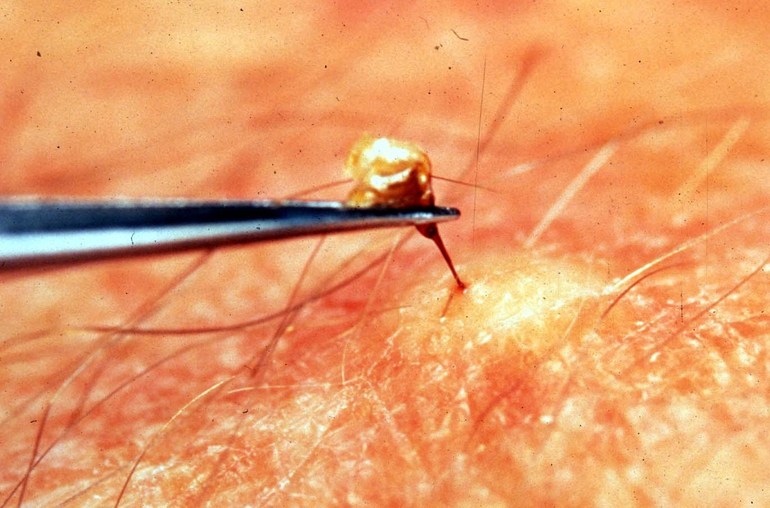
Particular attention is paid to children and adults with allergies. Untimely provision of medical care can lead to shock, suffocation. Therefore, such persons must observe preventive measures that help reduce the risk of being stung by wasps:

- refusal to use deodorants and perfumes with a strong aroma that attracts the attention of insects;
- wearing trousers, long-sleeved clothing, closed shoes and hats;
- the use of repellents for open skin, candles and other chemical products that repel insects;
- the closure of sugary drinks and foods that attract the attention of winged insects;
- It is recommended to go to bed or sit on a cover where there is no wasp;
- it is necessary to avoid orchards, apiaries, flower beds and other places of congestion of wasps, bees;
- gloved fruits, vegetables and berries from the ground.
You can’t crush winged ones, since such actions increase the likelihood of attack and arrival of other insects from the swarm. Forbidden movements include waving and panic. Such human behavior excites a wasp. She perceives them as aggression.
If the face is in a place of accumulation of insects, it is recommended to leave it slowly and calmly.
The wasp that flew into the house is sprayed with a special spray to kill insects. You can’t catch it yourself or try to kill it with a towel. The sting easily passes through the tissue into the skin. Negatively affects the behavior of the winged - fly swatter. If used, the insect can defend itself by attacking.
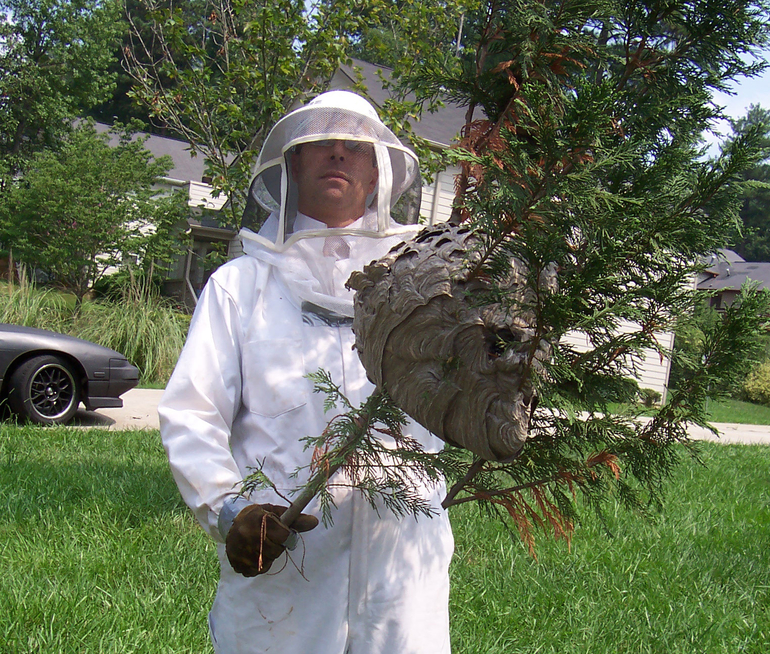
To protect yourself from a swarm attack, it is recommended that you use water. It has been proven that wasps, bees and hornets are afraid of liquids. You can hide from them by diving into a reservoir. If wasps are constantly flying around the house, then there is a nest nearby. It is recommended to eliminate it as soon as possible, since in August they are most aggressive.
The procedure is performed in special clothes sewn from thick fabric. A mosquito net is put on the face. Work is carried out in the evening, after sunset. To destroy the nests, a washing vacuum cleaner, smoke and other methods are used. If the nest is located on a tree branch, smoke will be required to smoke them.
A fire is made under the tree from branches and firewood so that the flame falls on the wasps. In the shortest period, they will leave their home. The wasp house is easily separated from the branch, burned along with chrysalis and larvae. But such a technique does not protect against the construction of a new nest. For smoking, you can use a blowtorch, cool boiling water. In the latter case, insects quickly leave their home, so you need to be prepared for their aggressiveness. Before the procedure, it is necessary to move the remaining households and animals away from the affected area.
Interesting Facts
Each type of wasp has a sting, which differs in different strengths of the effect of the poison on the victim's body. Representatives of a certain group have their own concentration of a hazardous substance. After a bite, pain appears, the degree of which depends on the type of wasp. The largest representative of the insect is the hornet.
He painfully bites, and his poison is introduced into the victim, causing a fatal outcome. For an allergy sufferer, one bite is enough to cause death. Such cases are often reported in Japan, where insects are mainly found. Less dangerous are European hornets. They are not aggressive, like the Japanese counterparts.
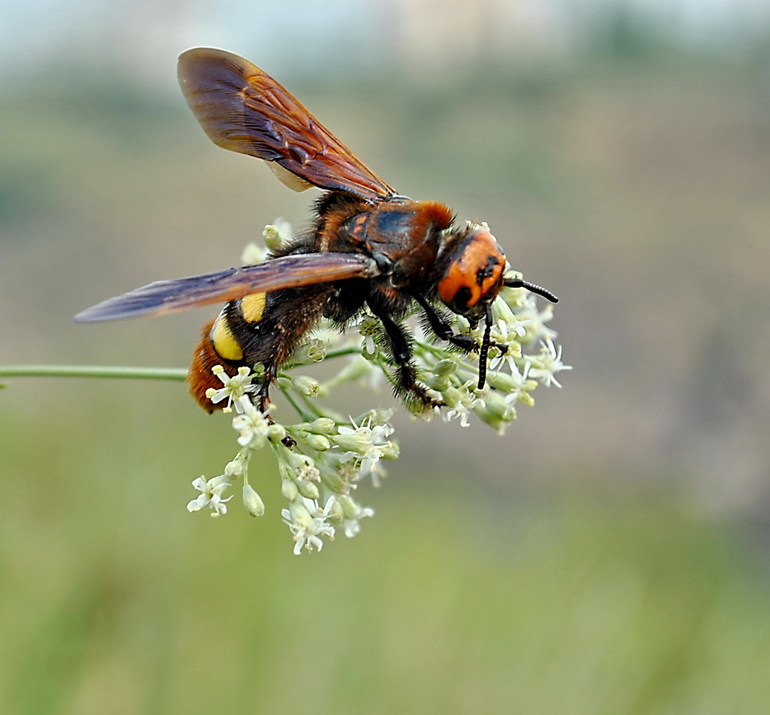
Chipped sting weakly. After their bite, a slight numbness of the stung place is observed.This is due to the concentration of the poison: it is not able to cause serious harm to health. Burrowing insects include philanthropists. They can not pierce the epidermis with a sting in the palm of a person. They can be pressed on the body without fear for their health.
Road or pompilides are known among travelers. They are characterized by weak bites. In this sense, only American bullet ants are ahead of them. The pain after their attack is severe. Regardless of the type of wasp, it is not recommended to provoke them so as not to sting. Despite his fear, there is no need to scream, move, run, attracting the attention of the winged.
- How to choose a vacuum cleaner taking into account the characteristics of the house and coatings?
- What to look for when choosing a water delivery
- How to quickly create comfort at home - tips for housewives
- How to choose the perfect TV - useful tips
- What to look for when choosing blinds
- What should be running shoes?
- What useful things can you buy in a hardware store
- Iphone 11 pro max review
- Than iPhone is better than Android smartphones



